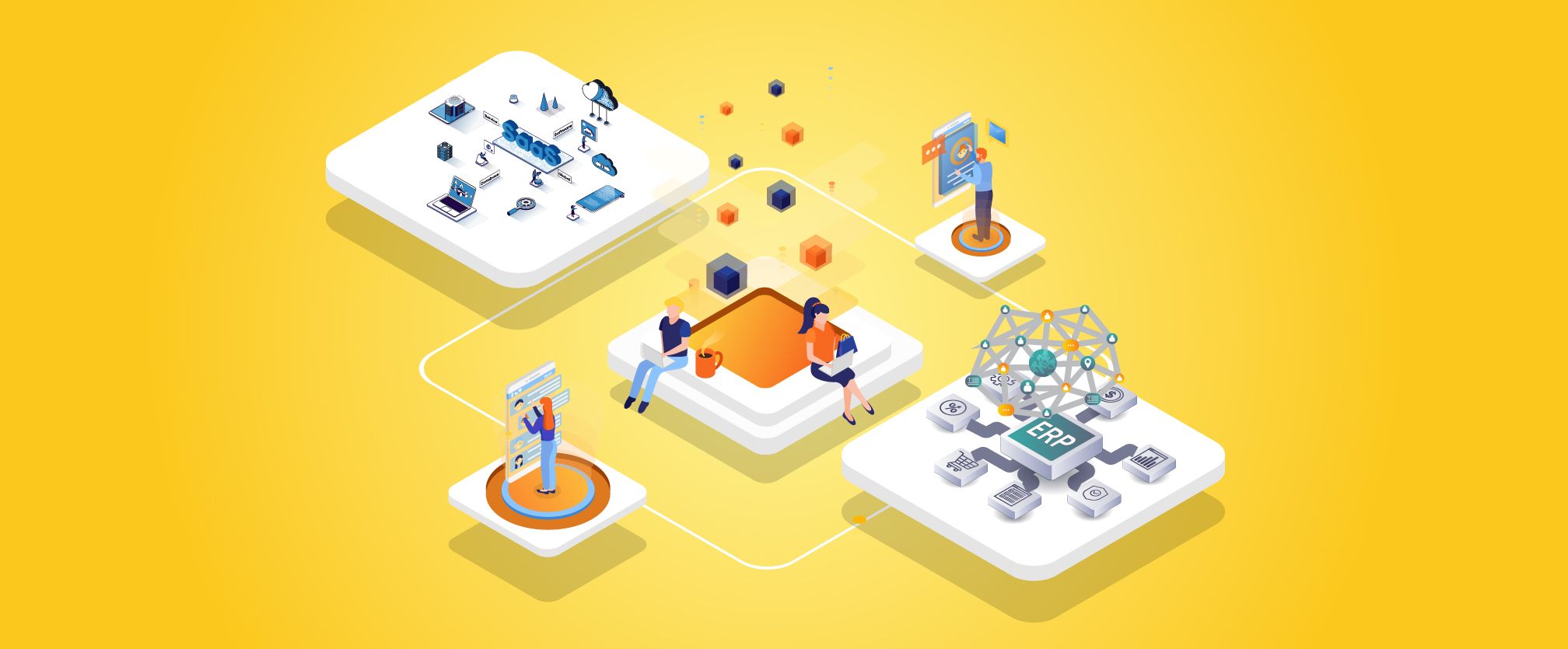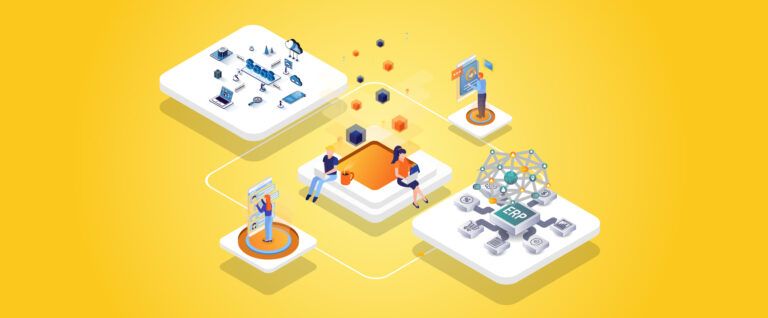Highly effective and customized enterprise resource planning (ERP) is critical for all organizations. Without a doubt, software-as-a-solution (SaaS) can help facilitate a custom-designed solution that fits the business’s needs and improves operational efficiency. More so, when utilized properly, SaaS can also offer the features and security solutions desired at a fraction of the cost of other solutions.
In the world of ERP systems, finding ways to reduce costs and improve functionality is critical. There are numerous reasons why SaaS applications can facilitate that solution.
Understanding ERP Systems and the Rise of SaaS Applications

Traditional solutions for providing ERPs typically involve a very large and time-consuming initial investment. After those first investments, there’s likely ongoing costs that must be considered.
There are support needs, updates and modernization requirements, and routine maintenance. There is also the need to continuously monitor and protect from attacks like ransomware.
ERP as SaaS has become a solution. It is a type of alternative to these in-house solutions that allows businesses to streamline their operations and workflow while capitalizing on cost savings and overall flexibility.
A SaaS ERP integrates into your system to provide a comprehensive, single-focused management tool. It incorporates most of the processes you use and the applications you need to utilize. By utilizing this method, organizations can gain real-time agility (even in a fast-changing world) while also allowing their company to grow and expand without limitations.
SaaS ERP is a type of cloud ERP. They can be put into place as a multi-tenant system, and are managed by the software provider. This reduces a great deal of the cost and frustration of management that comes from traditional solutions.
Benefits of Integrating SaaS Applications with ERP Systems
Consider the benefits of investing in SaaS applications with EPR systems specifically for the benefit of improving business operations and functionality.
- Reduced upfront costs: One of the most impactful reasons to utilize these tools is their ability to offer a much lower initial cost. Unlike traditional solutions, there is no need for the business to purchase and install the software themselves. Instead, they are able to purchase a subscription which keeps costs lower.
- Put in place fast: Unlike more traditional, in-house built systems, SaaS ERPs are able to be put into place quickly without requiring much lead time. This means companies can work to instantly grow and maximize their functionality without waiting months or longer for the development of a solution.
- Scalability: Just as implementation is quick and easy, so is scaling the SaaS solution to continuously meet needs or grow with the company. It can be scaled both up and down based on the specific needs of the business.
- Consistently updated: Since the company does not outright own the software, it does not need to pay for consistent updates itself. These are managed through the automatic updates provided by the SaaS vendor.
Key Considerations for Integration
For companies poised to begin using SaaS applications with ERP systems, selecting a carefully aligned solution is key and not always easy to do. With so many SaaS solutions available, it can be hard to wade through the options to find those best suited for the way your organization does business. Key considerations to consider include:
- Will the system integrate with legacy systems already in place? In most situations, the SaaS ERP should integrate directly with existing software applications and other tools being used. Look for those that offer flexibility to meet with your marketing automation tools and CRM, for example.
- Scalability to meet the company’s expected changes is critical. Your business is likely to grow and change, compliance requirements will too, and you need the SaaS ERP to be able to flex with that process. Look for solutions that offer users and modules that build the flexibility desired.
- Support is necessary for many organizations. Some of the best solutions provide not just support to manage questions and concerns, but full training solutions as well, enabling organizations to get their system up and running quickly.
- Security is critical. Choosing a product that meets or exceeds compliance and security requirements is also necessary, depending on the industry and the type of threats present.
In addition to these factors, nearly all systems have to fit the company’s cost needs. Some products are more affordable than others. Initially, SaaS ERP is more affordable. A custom-designed solution will seemingly be more expensive to design. However, do not overlook the critical ongoing costs of those systems. Subscription costs tend to be much higher. That drops any value saved from a custom solution significantly.
Steps to Successfully Integrate SaaS Applications with ERP Systems
One of the best components of SaaS ERPs is that they often offer hands-on support. The best organizations provide training and development support throughout the initial uses, ensuring that it gets in place properly. Otherwise, it may be necessary to work with an integration partner who can help to facilitate the process.
Key steps to take to create a SaaS integration strategy:
- Ensure clearly defined business goals and objectives are in place and understood by all parties. Prioritize integrations that are necessary first. Ensure there is clarity in the design and functional needs of the SaaS.
- Define the nonfunctional requirements. This enables better overall results. The system you select must meet your current objectives for your clients. At the same time, it must provide specific strategies for improving security.
- Train and implement strategies for the best team. Specific tasks within the SaaS EPR infrastructure are often assigned so that those people can receive advanced training and oversight to support the solution’s long-term growth.
- Roll out the integration over time. Once people are set and trained, take the integration one step at a time, moving from the testing and production environment into the company’s system with careful management. This allows for clarity when finding concerns as you go.
Exploring the Solutions for Your Company’s Needs
Integrating SaaS applications with ERP makes sense and offers numerous benefits, including lower costs and more tailored solutions. The integration process, facilitated by a carefully selected SaaS vendor, can help enable long-term gains for companies looking to improve business operations and minimize costs. Look for SaaS applications with ERP systems to become increasingly more effective as this technological solution grows.
